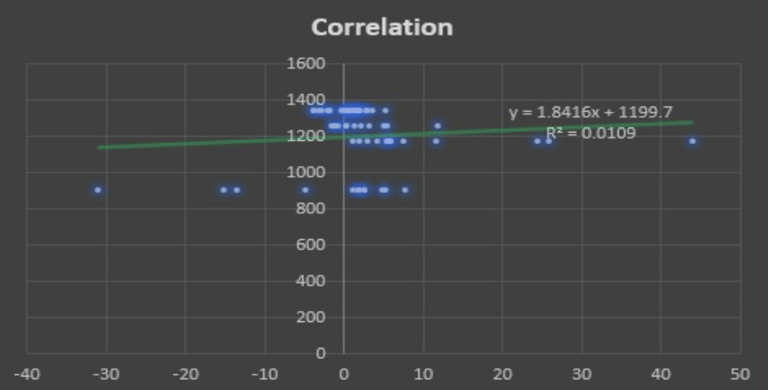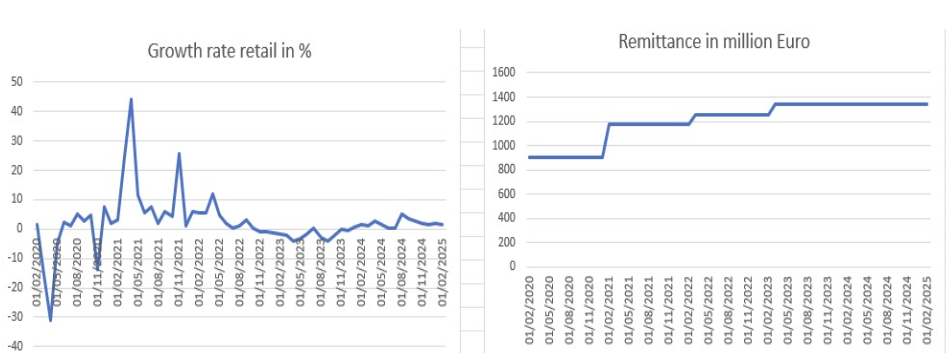Do Remittances Drive Retail Growth?
ECONOMICS
Amaan Imran


Authors Calculation:
The regression model has x as the independent variable, which refers to remittances, and Y refers to the growth rate of retail as a percentage. The relationship is positive, so an increase in remittances does show an impact on the growth of retail. According to the data and the regression model, an increase of Growth rate of 1% in remittances has an approximate increase of €0.0184 million in sales. The intercept means that if there are no remittances, there will still be €1199.7 million in sales. This figure is not necessarily accurate, as sales are determined by many market forces, etc. It is important to take into account that the correlation seems to be weak since points are scattered and variance is high. In addition, the coefficient of determination is quite low, and it says only 1.09% of the variation in sales can be explained by changes in remittances. This indicates remittances have little to no explanatory power for predicting sales in this dataset.


Reasons for Regression:
According to the graphs, the have fluctuated for France over the years from 2020 to the first quarter of 2025. There is a huge dip in this growth due to the COVID-19 pandemic, which highly affected the economy in 2020 (Verhoef, Noordhoff, and Sloot 2022) . In the first quarter of 2021, sales rose by over 40% and increased again in the last quarter of 2021 (Malliet et al. 2020) . In 2022, during the first two quarters, the growth level was still quite high, but it has stabilized since. In contrast, the Remittances have increased consistently from 2020 to the first quarter of 2025 from around 900 million euros to around 1400 million euros.
